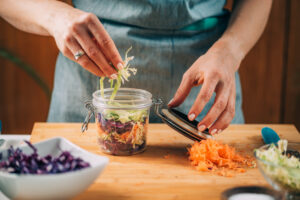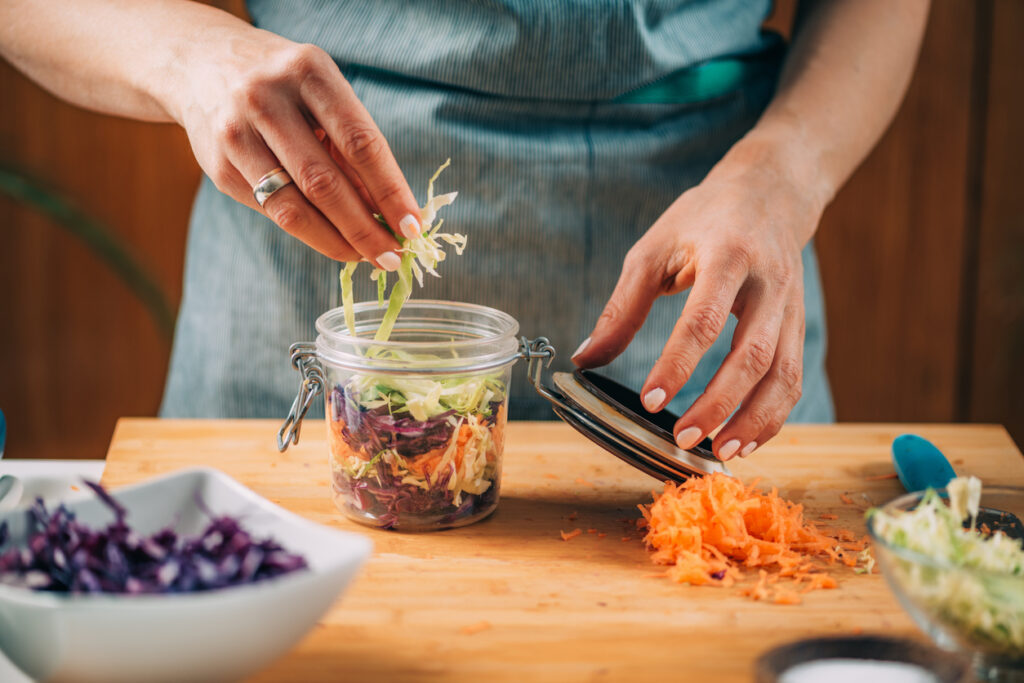For cooks, keeping the flavor and freshness of a harvest—and storing it for later use—has given fermented foods a major role in many cuisines.
The process of fermentation, an ancient food preservation technique that’s centuries old and predates modern chemical preservation methods, is the key to doing just that.
What Is Fermentation?
According to the definition, fermentation takes place thanks to the action of microorganisms, primarily bacteria and yeast. These microorganisms can be naturally present in the food or can be introduced as a “starter culture.”
The microorganisms help break down the food’s components, such as sugars and starches, to aid in altering flavors and textures while also contributing to preservation.
“As far back as the Egyptians and Romans, they had these different techniques they utilized where they wanted the foods they were catching, or cultivating, to last longer to feed their people. So salt preservation was one of the main processes that came into play,” relays chef and restaurateur Russell Jackson of Reverence NYC Hospitality Group.
Chef Jackson shares that using salt in fermented foods is one of the easiest ways to preserve vegetables and fruits. “You can’t use basic table salt. You have to always use a natural salt,” points out the culinary pro, who likes to use a Mexican Riviera sea salt by Marisal-Dos Soles Sea Salt to create a salt brine to use for his fermentation process.
The Rules of Fermentation
While fermenting foods is something we can all try, it’s best to become familiar with the process before attempting it. “I suggest getting a basic fermentation kit. Start small [so] you understand the technique and the technology,” says Jackson. Food/heat-safe glass jars or containers can be found online or even at the hardware store.
“You should never be buying canned tomatoes; you should never be buying pickles. All these things you can make at home,” he says about fermented foods. “You need to just follow some really, basic rules.”
A fundamental principle for fermented foods is sanitation. It’s a rule that should never be broken. “If you’re going to ferment anything, for God’s sake, be sanitary. You have to be sanitary because if not, you will create a botulism bomb that will kill everyone in your house,” he cautions.
Chef Jackson continues, “You sanitize your materials, wash and keep clean hands, clean your equipment and tools, work on clean surfaces, use clean towels. Clean your vegetables and put them inside a clean jar… Because it only takes a couple of tiny bad germs to get in there to spoil an entire batch. As you go along, yeast will build up sometimes, so you’ll get a white film. Just shake it [the container], it’s okay; it’s not a bad thing. The only time that you see something that’s bad is if it’s green or black. If it’s green, it may not necessarily taste good. If it’s black, throw the whole thing out.”
For his tips for sanitizing equipment for the fermenting process, he says, “Use a high temperature cycle in the dishwasher…Some people [like to] do a quick boil. I’ve known other people to put [equipment] in the oven for a period of time to make sure that they’re clean and then cool them down.” Sanitation saves lives.
By Jocelyn Amador






